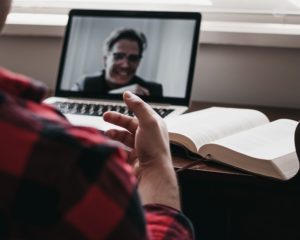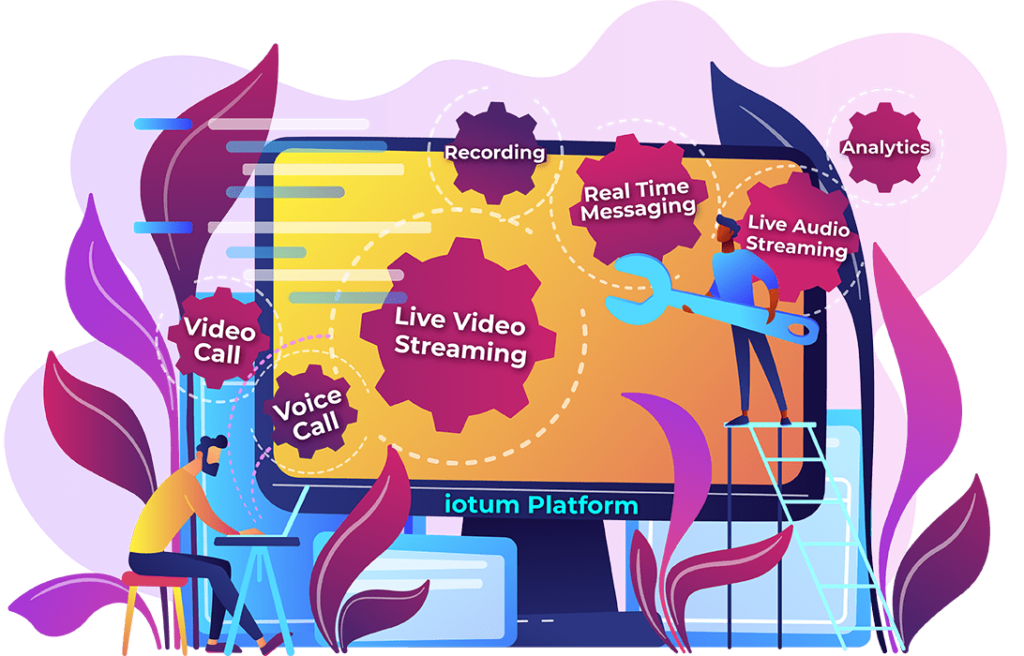 When something as big as a pandemic affects the world, it inevitably changes how the world works. Step by step, traversing through unknown territory, each industry and each business is learning how to adapt and be successful in this new normal – especially legal.
When something as big as a pandemic affects the world, it inevitably changes how the world works. Step by step, traversing through unknown territory, each industry and each business is learning how to adapt and be successful in this new normal – especially legal.
The legal system has undergone multiple restrictions and limitations, and as a result, has impacted the frequency and availability of motions, pre-trials, trials, and the entirety of the litigation process as a whole.
As a legal professional, surely you’ve experienced firsthand the implications of having to work from home. Virtual meetings have become the currency as previous processes and systems have shifted to transform into an online space. With an obviously changing legal landscape, video conferencing is becoming the go-to solution for many legal proceedings, starting with examinations for discovery.
Video conferencing allows both sides of counsel to acquire necessary and critical facts, evidence, support, claims, proof, and defenses in the lawsuit without ever having to step foot in court.
Assuming your law firm has made the transition online – upping the number of remote meetings, strengthening the IT department, learning how to use screen sharing and virtual backgrounds, making the adjustment to shorter, more concise online meetings and presentations – you can now see how technology provides the opportunity to communicate remotely with ease.
Let’s dive deeper into how this takes shape across different legal implications.
One of the handiest and forward-pushing features of video conferencing includes recording. Hitting record once an online meeting is underway, provides participants with a start-to-finish, fully captured recording of everything that transpired in the sync.
This, however, can be a procedural shift for many firms and businesses. Prior to moving online and most people working from home, were team calls ever recorded? Who took meeting notes? How much time was spent convening? Make the move more seamless by incorporating technology that does the heavy-lifting like capturing audio, video, screengrabs, sent links and documents for you.
Alongside the benefit of recording typically comes transcription and smart summaries, two features that enhance the examination discovery process. Not only is nuance and body language captured via video, but also the tone of voice, thought patterns, and vocabulary can be discerned by way of the technology’s speaker tags, advanced algorithms, and common topic links.
On the other side of the coin, however, lies a few challenges future litigation and investigation should consider. Mass recording raises three points of concern from a data storage standpoint:
The Multiplication of Data
When more and more online exchanges are recorded, more files pile up and so too can the size of the video files. As the amount of data climbs in size, the ability to safely store and retrieve will increase in tandem.
Managing Records
Safe and secure data storage is imperative as the information shared and discussed can be highly sensitive and not meant for anyone else to see. Consider how and where these files are being stored. Who or what is the safeguard? Who has access, and how are they being protected?
Discovery
Previously, it’s possible that meetings were audio-recorded, or written down in a word processing document, therefore, limiting the accuracy and scope of the provided information.
Perhaps the data was collated in a presentation or agenda. Now, the potential for more detailed electronic files and transcriptions is far more advantageous than ever. Recorded online meetings have the capacity to capture audio and or video alongside all the meeting content that includes every transaction and exchange throughout the meeting.
Keep in mind the value of facial expressions, gesticulations, and everything that is communicated without speaking.
Something To Remember:
Access to recorded meetings can prove to be both a positive and negative as a “digital footprint” could be grounds for later use. Ensure your privacy and security measures are up to date and transparent as lawsuit discovery requests can include video meetings just as commonly as emails and documents.
To ensure overall accuracy and transparency, set policies that create cohesion when it comes to video conferencing. Organizing data, deciding on guidelines, and generally establishing a flow or procedure when it comes to online meetings will ensure security risks are limited, data is mined and information is readily available:
- Decide on naming conventions for meetings and who is in charge of managing the recordings. Where will the recordings live and what are the administrative rules for storage, accessibility, deletion, discovery, etc?
- Depending on the size of the meeting, delegate recording responsibilities to one or a few participants. Select a participant from each department, supervisor or manager to be in charge of recording different types of meetings. Who will be the moderator and what policies, rules, and procedures need to be put in place for different virtual meetings?
- What “view” do you want to save? Once you’ve decided who the moderator is (or maybe there are a few) choose which of the various meeting options meet your firm’s needs and who will be doing the recording from which computer – or vantage point.
- Keep an eye on the end summaries and reports provided by the video conferencing platform and determine who is responsible for them. Who will receive them and how will they be accessed?
- Avoid derailing discovery with video conferencing depositions that:
Establish the physical location of the deponent and how s/he will be logistically set up to connect to the virtual meeting
Come with another option if the court reporter and deponent are unable to show up in the same location
Get exhibits to the deponent via mail in advance or electronically during the deposition
Run smoothly – test the technology before the day of the virtual deposition
Connect multiple attorneys and participants from various geographic locations
Are agreed upon by everyone as to whether or not it will be recorded – get consent - Have a retention policy that breaks down how video conferences will be stored, and later destroyed after a certain amount of time.
After an online meeting has wrapped up, the recordings are saved in the cloud and remain accessible through the firm’s portal or by the moderator. Allowing certain participants access is a privacy and security measure. General records management, operating protocols, and access should be established through the discussion and development of policy and procedure.
Prevent security breaches and video eavesdropping with technology that makes every online exchange safe and private. Mandate the use of a one-time access code or one person hitting record during the meeting. Look for features such as:
- One-time Access Code: Each call is encrypted with a unique and private code that is only valid for the specified and scheduled conference call.
- Meeting Lock: Right after participants have shown up, activate this feature to prevent unwanted participants from intervening. Anyone who shows up late will be required to ask for permission from the moderator.
- Security Code: If the online meeting agenda entails the discussion of highly sensitive information, add on another layer of security with an additional code required upon entering a conference.
 Technology that is readily available and provides the grounds for discovery to exist is proving to become more prevalent. And going forward, it’s unlikely that in-person proceedings will take precedence. If legal discovery and other processes can be accomplished online, it’s possible that they will continue to be held online.
Technology that is readily available and provides the grounds for discovery to exist is proving to become more prevalent. And going forward, it’s unlikely that in-person proceedings will take precedence. If legal discovery and other processes can be accomplished online, it’s possible that they will continue to be held online.
When it comes to resorting to video conferencing software instead of showing up in person,
the benefits – including cost savings, less travel, more time, remote collaboration, increase in productivity, fewer delays – surely outweigh the challenges:
Challenge #1:
Traditionally, each party is typically in the physical presence of their legal counsel who is required to provide, assist, and explain documents and exhibits during the examination.
Solution:
Instead, with video conferencing, this is an opportunity to plan ahead. Attorneys and legal counsel must sort out any and every piece of evidence, exhibit, document, and proof in advance. It should be clear, labeled, organized, titled, and sent by mail or ready to be fired off electronically. Ensure addresses are up to date, spelled correctly and everyone who needs the data is included in the digital transaction or mailed post.
Challenge #2:
Assessing a witnesses’ demeanor and composure could be murky through a video link rather than being present in the same physical location.
Solution:
A technology test done in the days leading up to the virtual meeting will ensure that the participant is seen clearly and wholly. Create a video conferencing reference guide for clients, colleagues, and other legal professionals within your firm that includes mandatory practices for vocal projection, lighting, posture, acceptable backgrounds, and any other information that makes video discovery on point, polished and professional.
Challenge #3:
A setting that isn’t institutional or appears not as neutral or appropriate could be jarring, misleading, or lead to an insufficient examination.
Solution:
Provide example videos and online tutorials of how the video conference deposition, discovery call, pre-trial, or trial process should unfold. Outline what is acceptable, and which set-ups and backgrounds will lead to a successful examination. Give examples of poor videos and what not to do, as well.
Challenge #4:
Not being in the same physical space opens up the examination to potential abuse or malpractice.
Solution:
Full transparency of the discussion is required form start to finish. Consent with a noticeable prompt at the beginning of the meeting ensures everyone is compliant. Furthermore, providing education and training regarding best practices during examination solidifies processes to make sure they are streamlined and up-to-standard.
In regards to the actual quality of communication throughout examinations for discovery via video conferencing here are some best practices:
• Set Aside The Time – Before, During And After
Check-ins, interviews, testimonies, meetings, depositions – ensure there is some time before to prepare, enough time during to get through and some time put aside after to reflect and go through the recording or summaries.
• Ensure All Tech Is Functioning
When time is of the essence, don’t get caught up trying to fix and solve technical issues while everyone is waiting. Show up to the video conference a little earlier and test your mic, speaker, and connection.
Check to see if everything is charged up, extra cords are available, wifi is strong, etc. Take advantage of audio and video testing offered by enterprise-level conference platforms.
• Double Check The Spot
Choose a spot that is quiet, sterile, and distraction-free. A white wall or closed off room with a plain, non-disruptive background works best.
• Stick To The Timing
Communicate the length of the meeting ahead of time so everyone can plan accordingly. Just like an in-person meeting, create an agenda, stick to it, and protect everyone’s time.
• Check Audio And Video Connection
Use a headset to minimize feedback and maximize your hearing and projection. Use video conferencing that has high-quality audio/video capabilities.
Let Callbridge provide your law firm with the video conferencing technology that makes pre-trial procedures run smoothly in a virtual setting. With the incredible potential to bring many in-person proceedings online, the opportunity to cut down costs, work more from home, expedite judicial processes, and get more information at a faster rate is at your fingertips.
Callbridge’s two-way communication platform has the power to go more in-depth and give dimension to the way law firms conduct their business. Recorded online meetings give all the parties the sense of being face-to-face but from a safe and healthy distance. Plus, it provides more flexible attendance and with the right forethought, planning and preparedness is a suitable substitute for in-person meetings.



